
Foundation plants have many functions. Possibly the most important is their ability to create an enticing, welcoming feeling in front of and surrounding a house. They add beauty, soften hard architectural lines, and improve the overall flow of the landscape.
The First Step in Making A House, A Home
Whether it’s a brand new house or a house that is new to you, the first step to making it feel warm and embracing is to include some foundation plants.
Plantings, generally around the foundation of the house or structure, are the basic definition of foundation plantings.
Their purpose is to provide a transition from flat ground such as sidewalks, driveways, and lawn, to the exterior of a building or house. With excellent use of these transition plants, the house looks like it belongs there and is more natural. It makes the house friendlier, hospitable, and home-like.
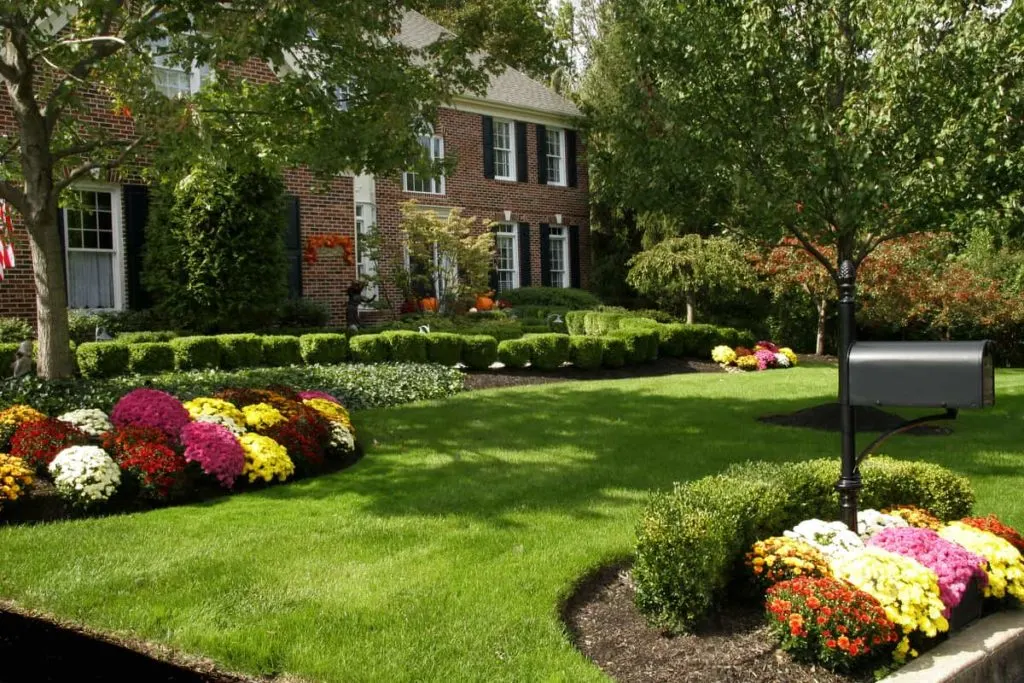
The Traditional Concept of Foundation Planting
Creating areas of greenery around the foundation of a house, traditionally, was to create areas that were easier to maintain while possibly disguising the unfinished portions of exposed foundations. This may have been before the plethora of options from durable, all-weather siding to stone and brick finishes, to name just a few.
It continues to be extremely useful to use shrubs, trees, and other plants to conceal utilities such as electrical boxes.
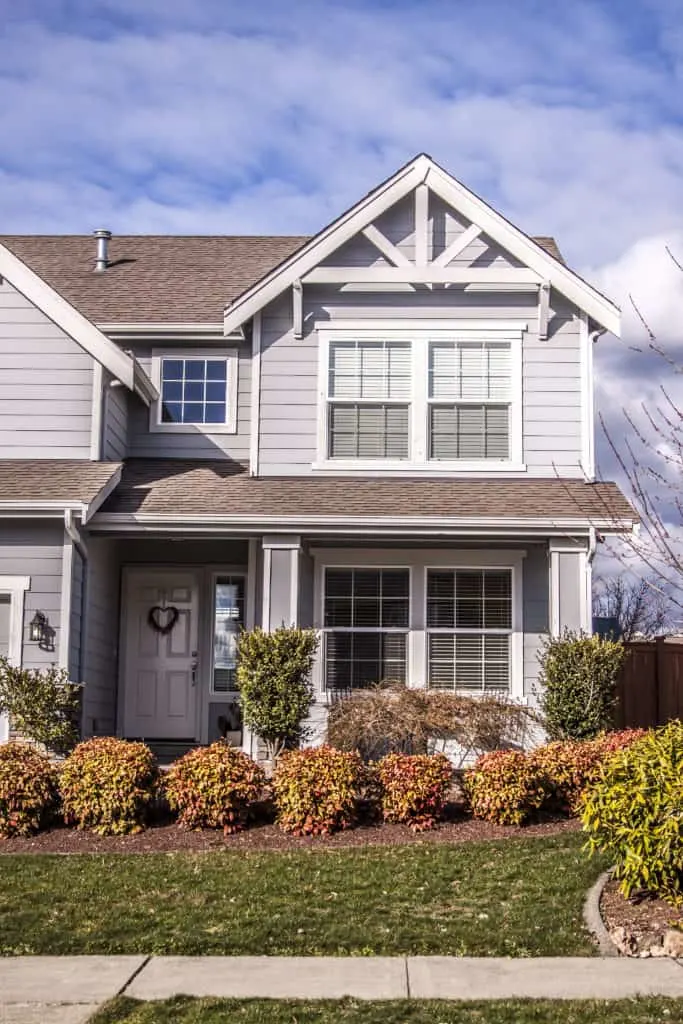
Foundation plantings were focused on three areas, usually of the most visually important to the home.
- The Entry Way
- The Corners
- The In Between
In this style of foundation planting, the focus is around the entry way. Secondly, planting the corner areas around the foundation with matching or complimentary plants is ideal. Often, in between the corners and the entry way, there are windows. In these cases, the in between plants are often shorter versions of the plants utilized at the entry way and the corners.
Foundation Planting Fundamentals
Small trees, shrubs, perennials, and ornamental grasses are perfect for foundation plants.
- Choose foundation plants that are tough. Suitable plants can handle being close to a structure and exposed to sun, wind, rain, pollution, shade. etc. Think plants that hang out on rocky bluffs rather than plants that are found nestled under a large canopy of trees.
- Excellent foundation plants grow to their mature size quickly and stay there. They are low maintenance and bred to grow to a certain size or shape. Examples of these might be globe arborvitae, nest spruce, dwarf hydrangea, or columnar Japanese holly.
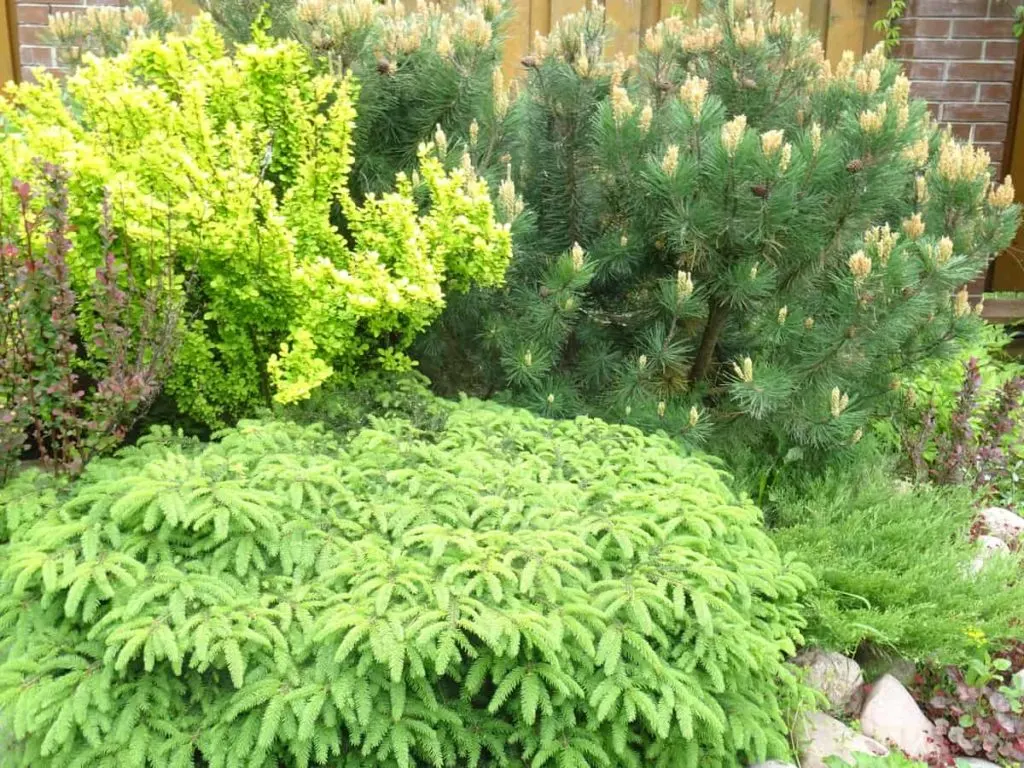
Provide enough room for full-grown foundation plants.
- Create a planting area that is 6 to 8 feet wide, or wide enough to incorporate a pleasing selection of foundation plants at maturity.
- Ensure plants will be at least a foot or so from the building when fully grown. This allows for maintenance without having to hurt or remove the plants.
- Space young plants with their mature size in mind. Choose short plants to grow below windows or other features. Place taller plants where their height will be an aesthetic asset.
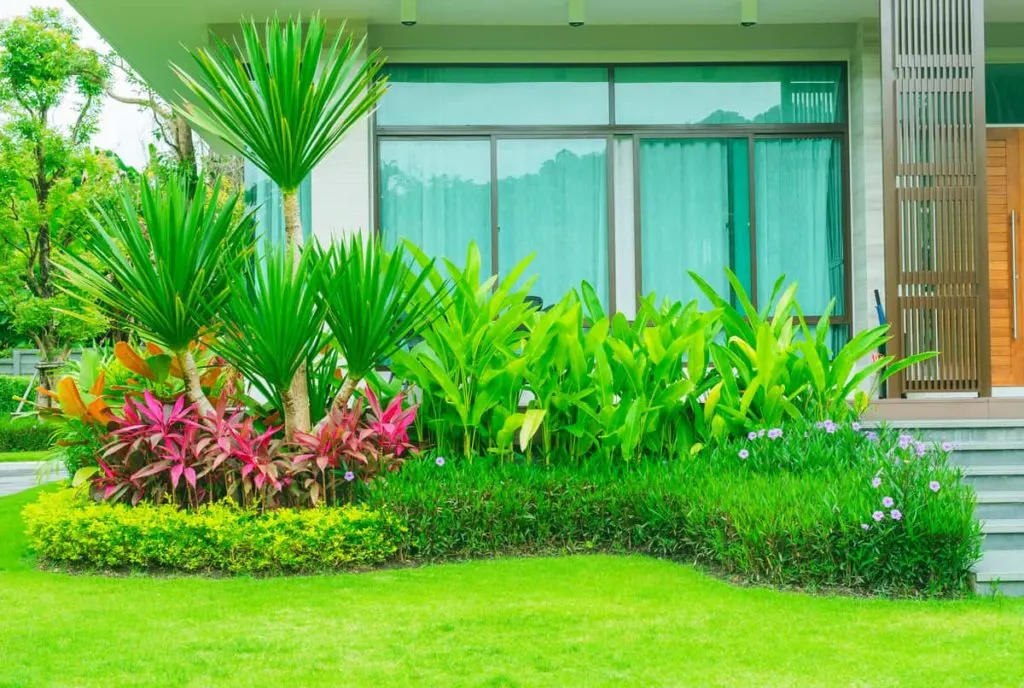
Foundation Planting – The Evolution
An updated idea of foundation planting is to establish the foundation of your overall planting plan. In this way, the welcoming plants which surround the home may compliment and echo themselves throughout the landscape.
In other words, establishing and growing long-lived trees, shrubs, and perennials can create the foundation of how the landscape is used.
A simple example may be to use the same grouping of shrubs in a back corner that are used at the front entrance. In this way, your traditional foundation planting creates an established cohesive planting scheme for the landscape as a whole.
Work With What You Have
Take note of the style of the home and plan accordingly. Check out what other foundation plantings look like on similar styled houses. Also notice what looks great to you and what you maybe don’t like very much. A successful foundation planting at your home should make you smile and be happy to be there.
As with any planting plan, allow form to follow function. Choose plants with colors that may compliment or contrast with colors in the landscape or are part of the exterior finishing of the home. Similarly, use textures which coincide with the existing style.
Take into consideration traffic patterns to ensure the plantings don’t get trampled by people taking shortcuts through the yard.
Make the most of flat ground, as well as slopes and hillsides. The foundation plants can be used to bring a hillside to life while also making it easier to maintain.
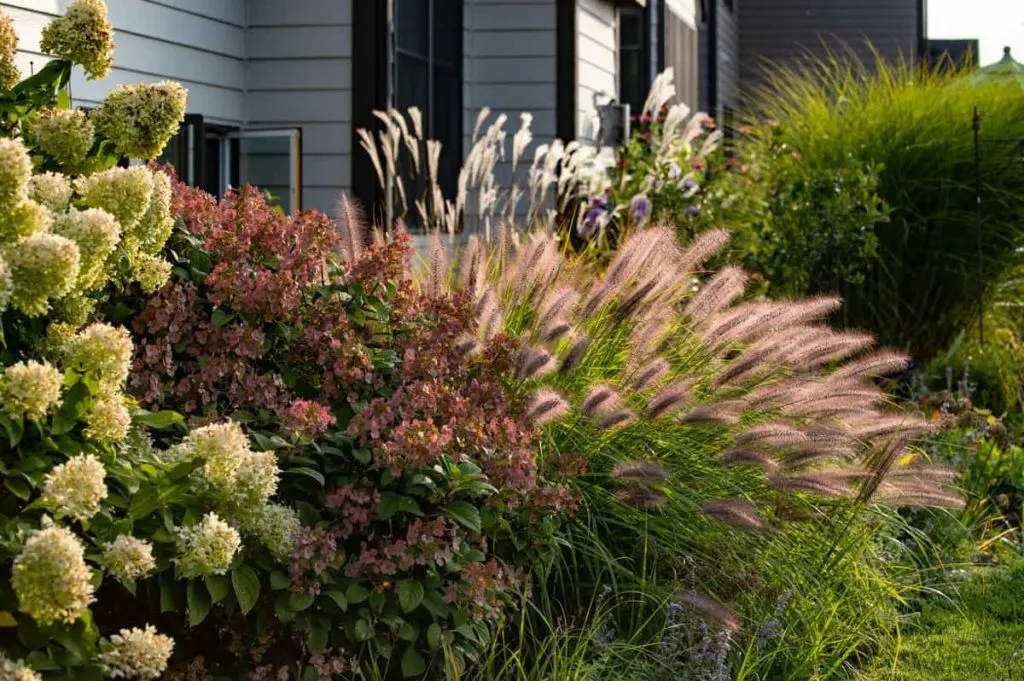
What Does the Future Hold (How Big Will These Plants Grow?)
It is, of course, best to avoid planting large shrubs or trees that will eventually block a window.
There may be other areas, such as gorgeous stone or brick exterior finishing, that deserve to be accentuated rather than covered up. In this instance, perhaps a complimentary stone retaining wall for the foundation planting is in order.
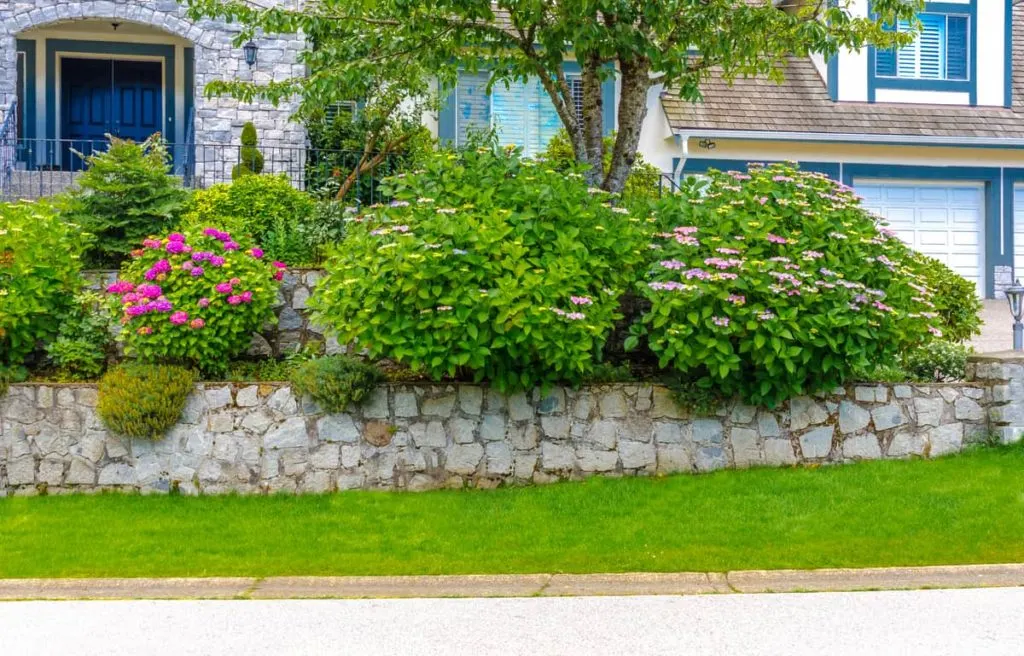
Thematic Adventures
For the purpose of creating a cohesive feeling in the landscape, establish a theme within the foundation planting. This will ensure a unified landscape as it develops, grows, and changes.
This may be subject to growing conditions. For example, a hot and dry xeriscape with unique cactus, yucca, agave and stone mulches may work in south-facing full sun conditions. The theme might need to be tweaked on the north side of structures to incorporate plants that tolerate more shade.
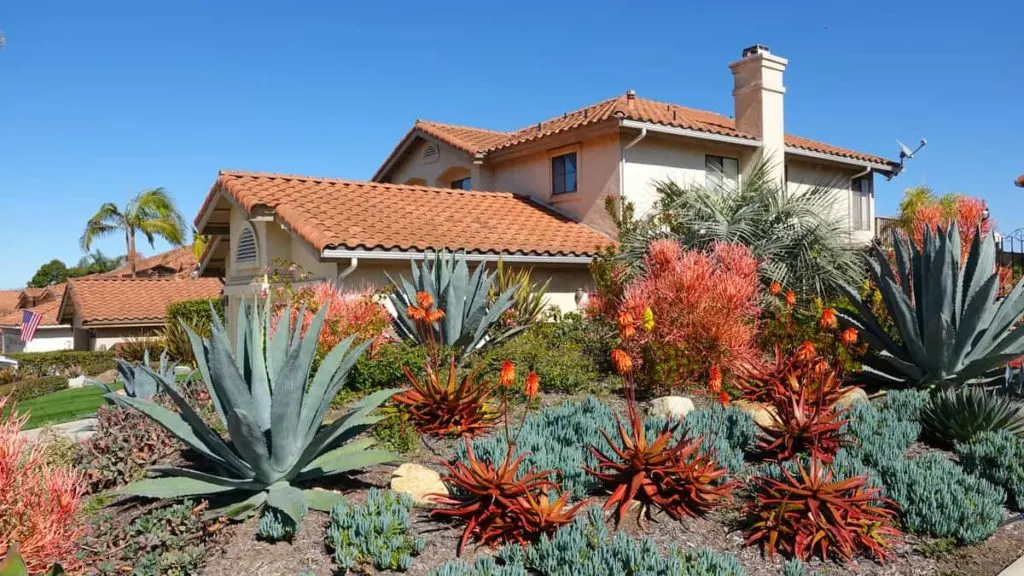
Alternatively, a mossy, old-growth, natural feeling theme which thrives in moist, shady conditions, may require some sun-loving plants for areas with full sun exposure.
Outdoor Spaces Defined
The foundation planting may also help to define outdoor spaces. The small tree and shrub garden at the entrance may continue to wrap around a lovely outdoor sitting area, in turn providing privacy.
Or the corner shrubbery may extend down the edge of the property, creating a gorgeous backdrop while enhancing the property’s definition.
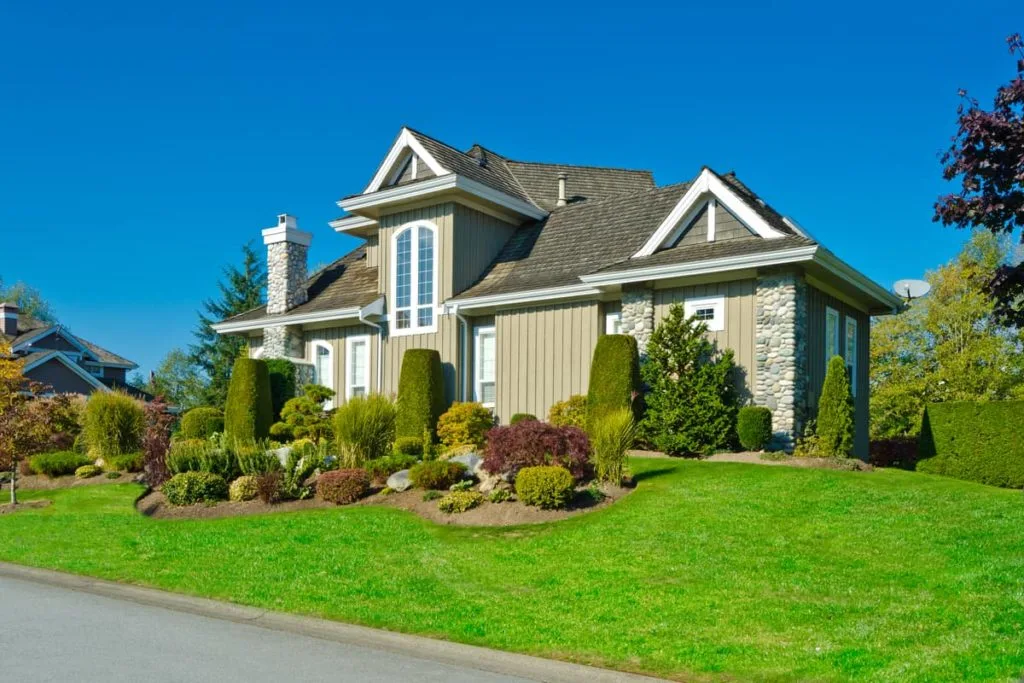
Mass Effect
A stunning, yet disciplined approach to foundation planting is to choose one, two, or three plants and planting them en masse surrounding the home’s structures as well as throughout the property. The effect is outstanding.
Planting en masse may also make maintenance a breeze as every plant has the same or similar requirements.
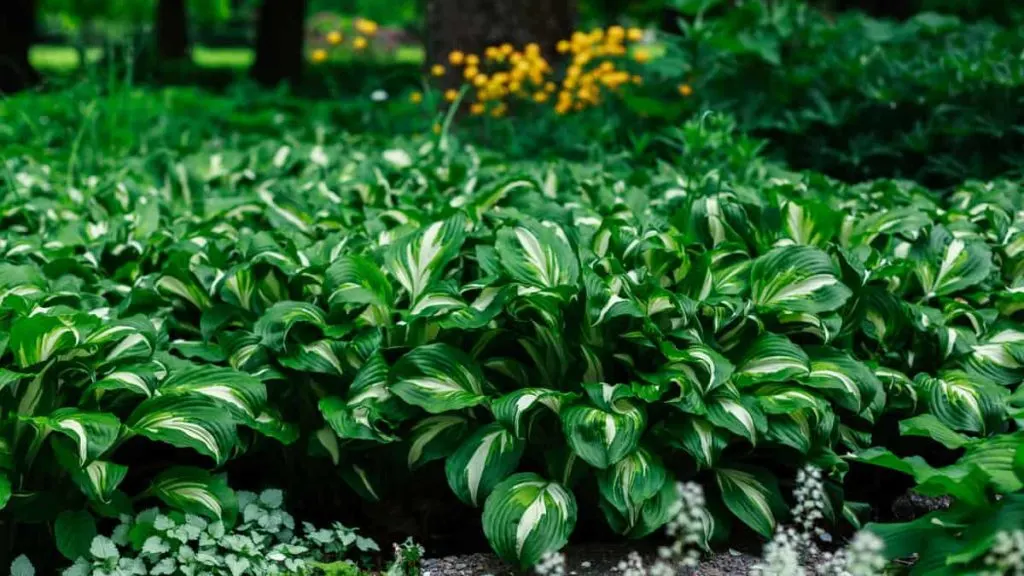
Worth Repeating
Some plants are incredible on their own. Others really shine when planted together in batches or in rows, accentuating the structural lines of the house or garden beds. Many evergreen shrubs such as juniper look great when planted in repeats, as do plenty of blooming shrubs such as rhododendron, hydrangea, and lilac.
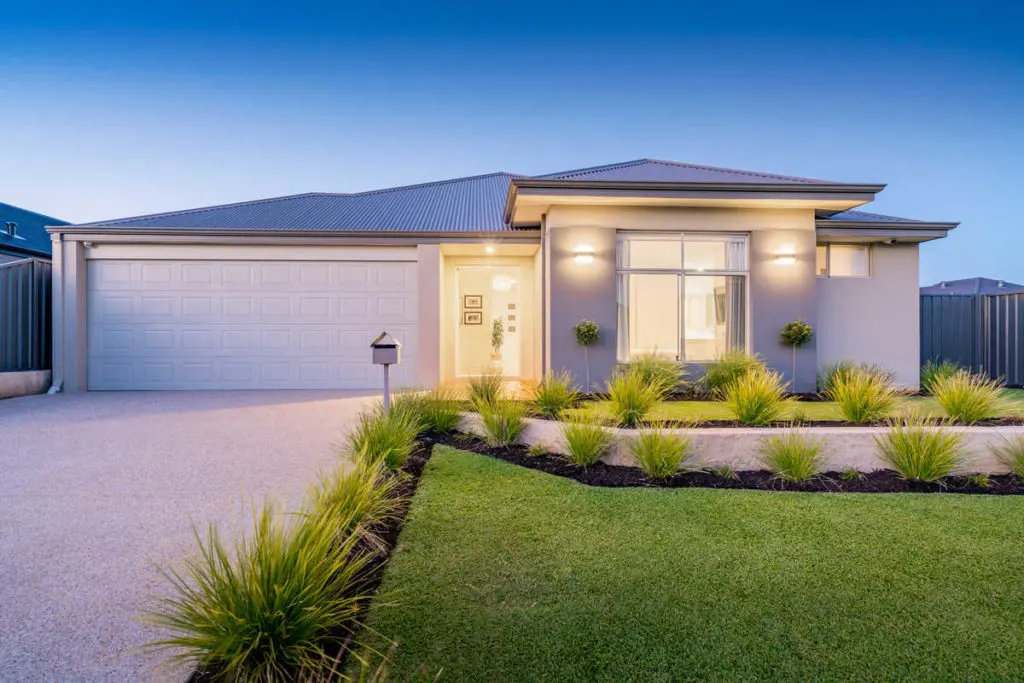
Beauty in Symmetry
For those who love a formal looking landscape, or who have a symmetrical house, establishing a foundation planting that is equal on both sides or creates a mirror image one side to the other can be very pleasing.
Sometimes, symmetrical foundation plantings are accompanied with straight lines which may be parallel or mirror nearby structures. The symmetry gives balance. It creates a hospitable space that seems to usher you right in the door.
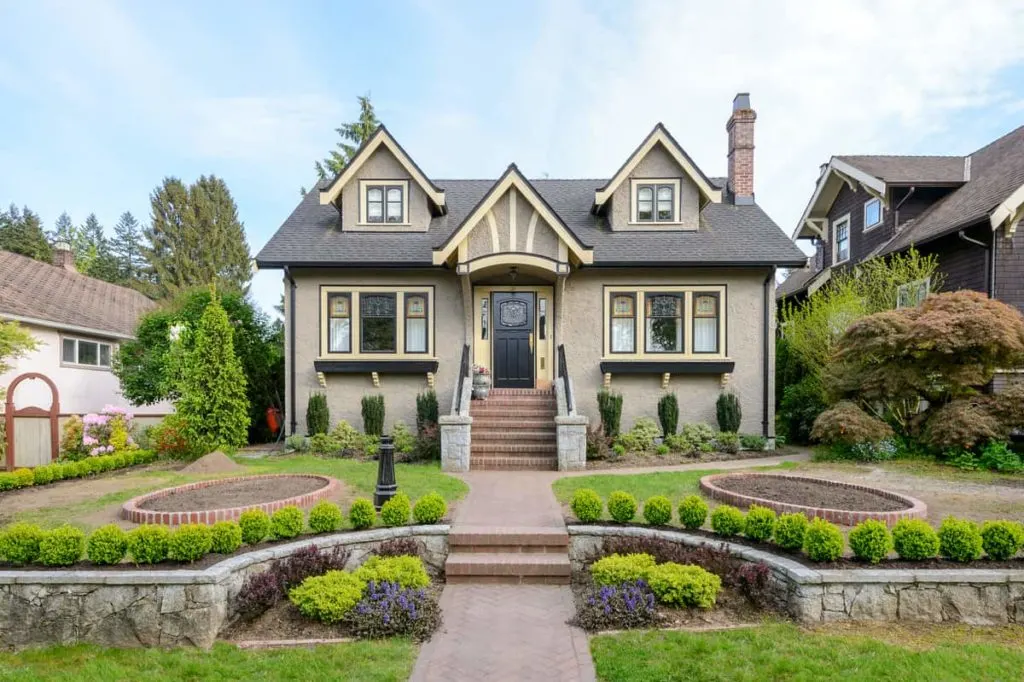
On the other hand, using an asymmetrical planting style, where there is differing heights, textures, and colors on each side may create a welcoming, laidback feel. Often this is paired with natural, rolling, free-flowing rounded lines. For some, this style is relaxing and inviting.
Color and Texture – Dramatic Contrast or Smooth Transitions
Use color and texture to enhance the overall theme of the foundation planting. Pay attention to how the color and texture may affect the feel. It may suit your style to use every color in the rainbow. On the other hand, a formal symmetrical garden will lose some of its effect with too many colors and textures.

Layer Up or Layer Down
Sensibly and traditionally, foundation plants are often planted in layers, with the tallest plants at the back, medium in the middle, and shortest in front. Depending on the style, it may be wonderful to leave some room to maneuver, layering in a different direction for example. When planning and laying out the plants, envision how the area will be approached while walking as well as how it may be viewed from the street.
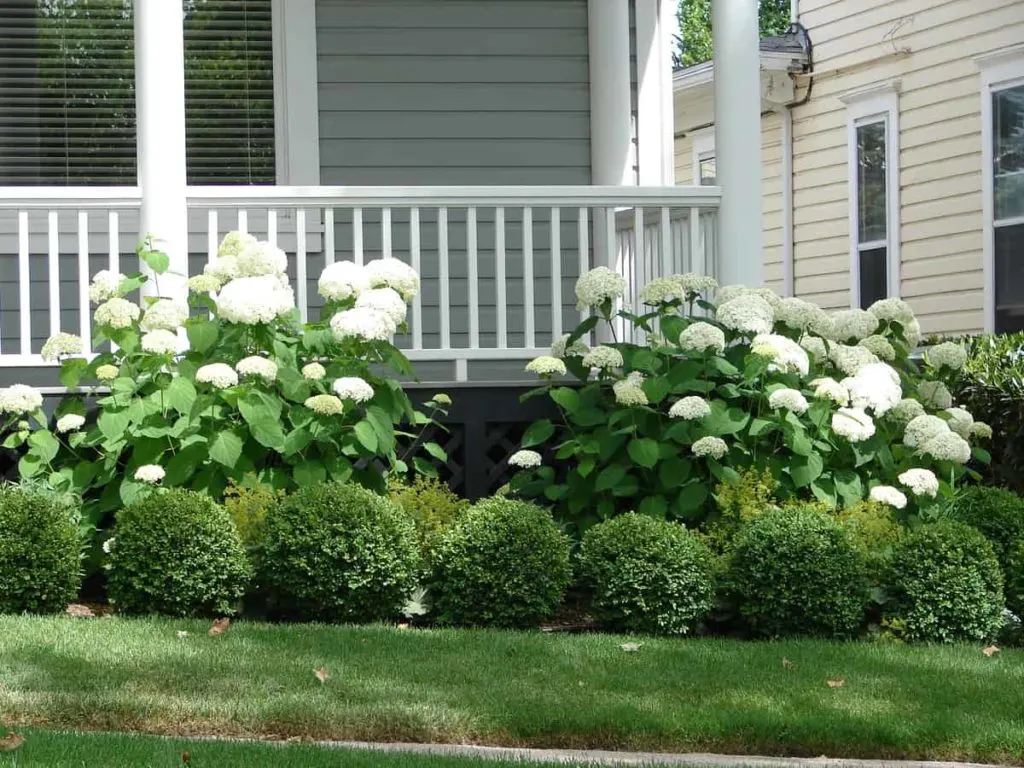
Something For All Seasons
An important concept with all landscape design, trying to ensure year-round interest in foundation plants. It is often too easy to pick up whatever is blooming at the garden center when we are choosing plants.
Try to choose a variety of plants that bloom in spring, summer, and fall. This may help to create a foundation planting that retains interest throughout the growing season.
Plants that stay green or in color all year such as broadleaf evergreens or evergreens can look great through all seasons.
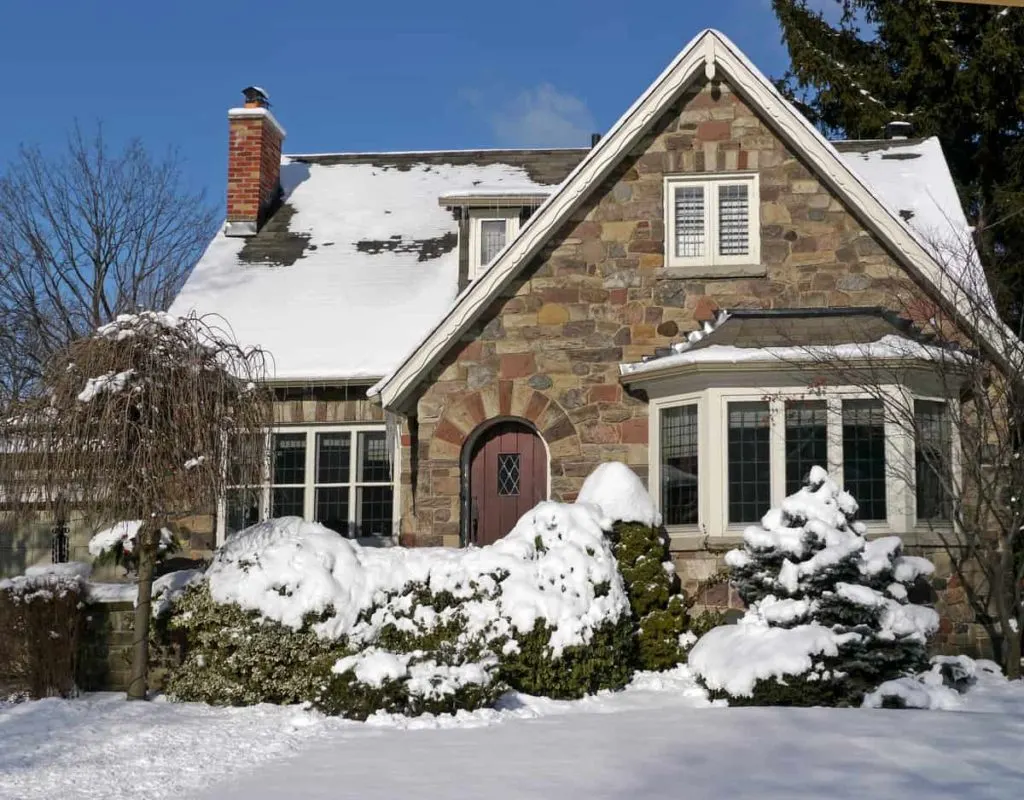
Another way to increase year-round interest is by using plants that are all-in-one. These plants have a spring blooming season, interesting summer foliage, produce lovely fruit in autumn, and nice stem color in winter. Some potential options may be dogwoods and cranberry bushes.
16 Best Foundation Plants To Consider
Keeping it Green – Best Evergreens
1. Nest Spruce (Picea abies ‘Nidiformis’)
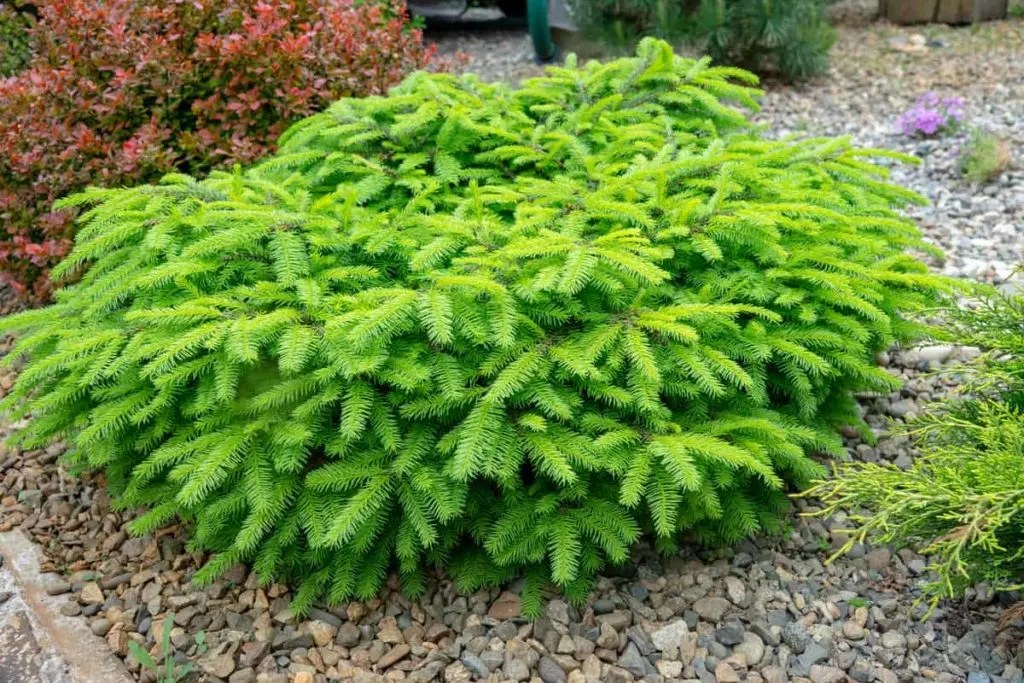
Size: 3 to 5 feet tall and 9 to 12 feet wide.
Exposure: Full sun.
Hardiness: Zones 3 to 7.
Shape: Horizontal.
2. Creeping Juniper (Juniperus horizontalis)
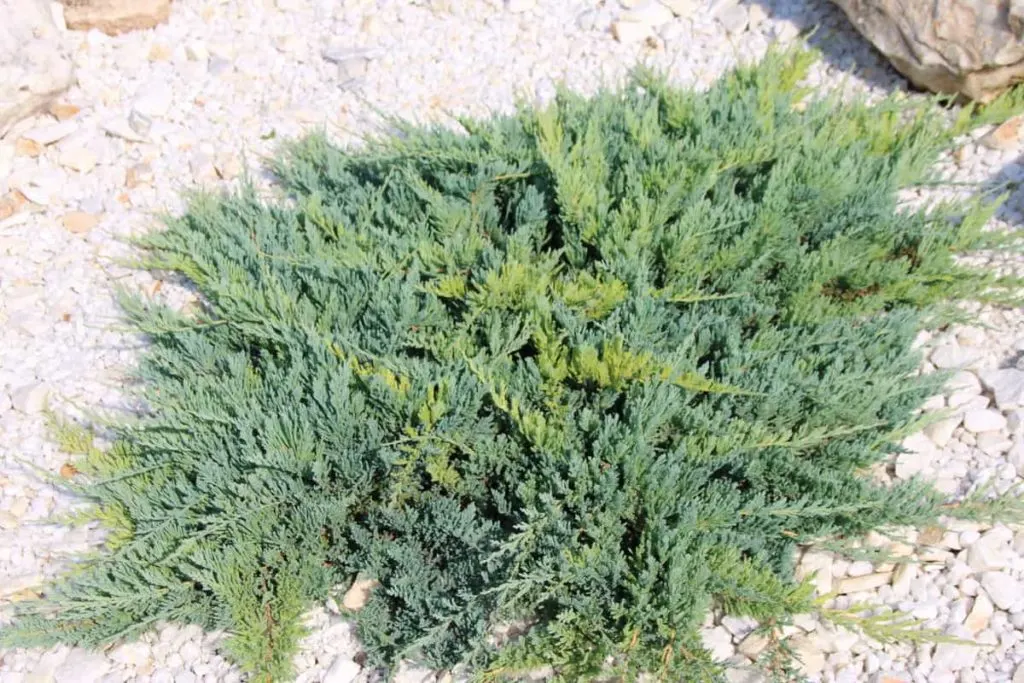
Size: 4 to 12 inches tall and 2 to 8 feet wide.
Exposure: Full sun.
Hardiness: Zones 3 to 9.
Shape: Horizontal.
3. Japanese Holly (Ilex crenata ‘Sky Pencil’)
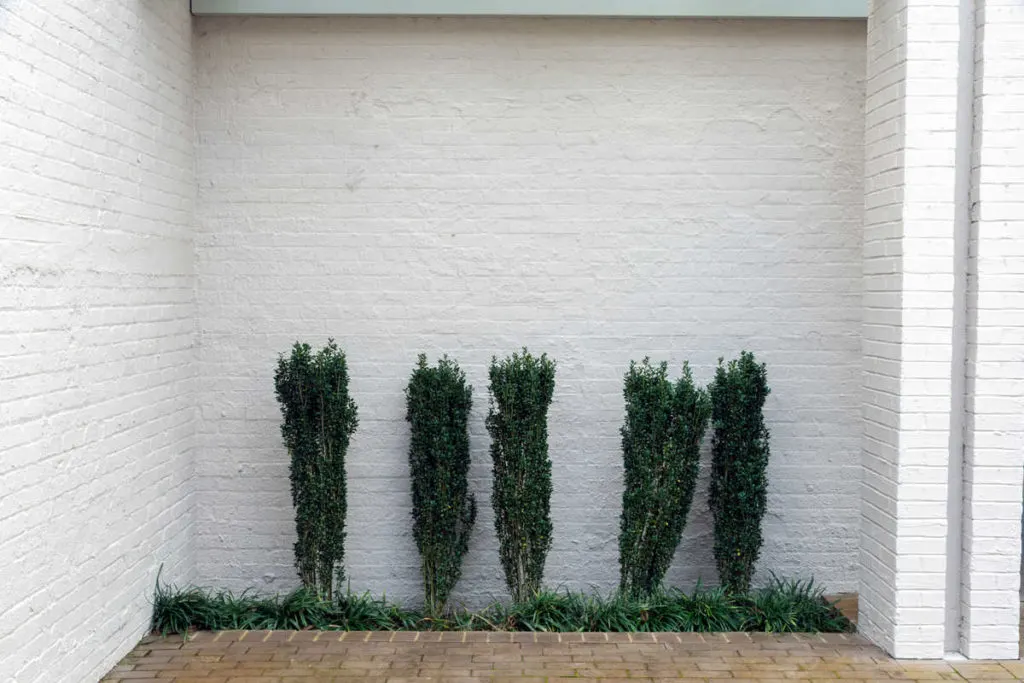
Size: 6 to 8 feet tall and 2 to 3 feet wide.
Exposure: Full sun to part shade.
Hardiness: Zones 5 to 9.
Shape: Columnar.
4. Dwarf Blue Spruce (Picea pungens ‘Globosa’)
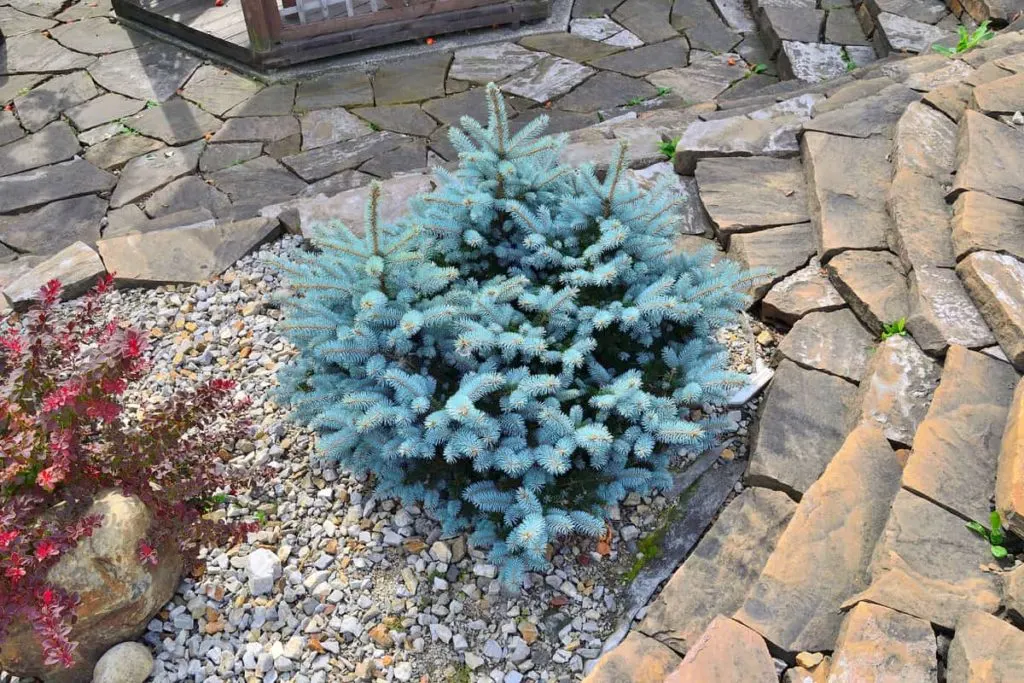
Size: 3 to 4 feet tall and wide.
Exposure: Full sun.
Hardiness: Zones 2 to 8.
Shape: Round.
5. Boxwood (Buxus microphylla)
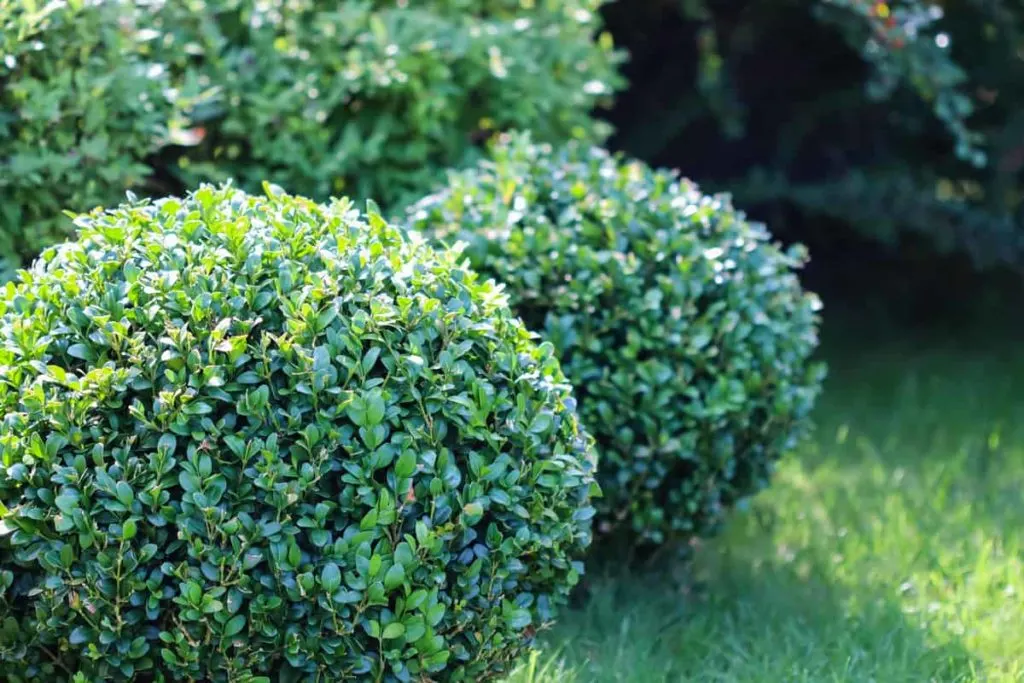
Size: 2 to 4 feet tall and wide.
Exposure: Full sun to part shade.
Hardiness: Zones 5 to 9.
Shape: Round.
Best Deciduous Small Trees and Shrubs
6. Smooth Hydrangea (Hydrangea arborescens)
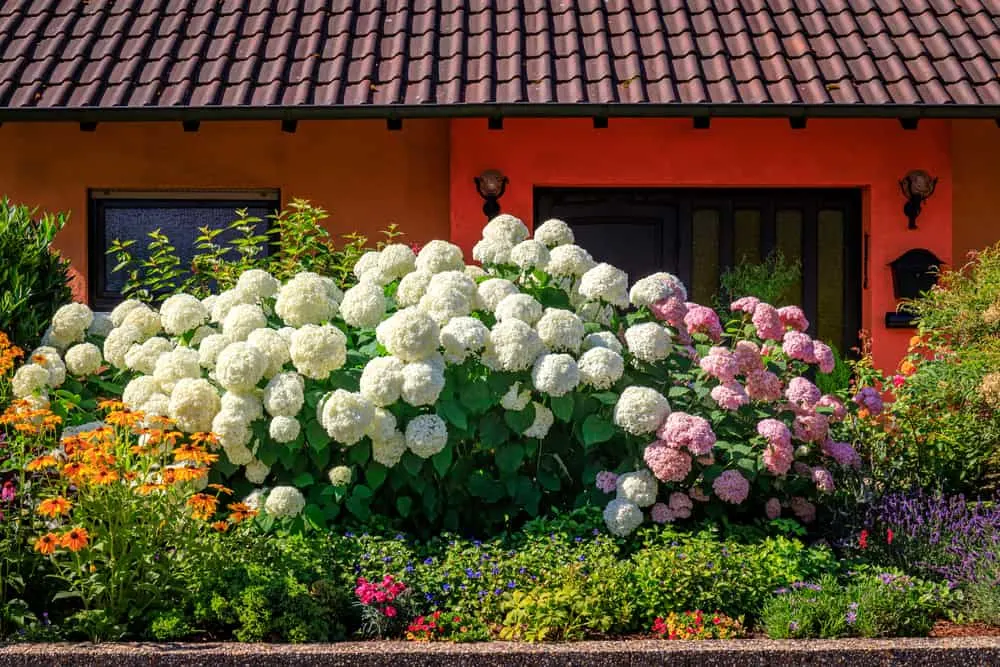
Size: 3 to 5 feet tall and wide.
Exposure: Full sun to sun.
Hardiness: Zones 3 to 9.
Shape: Round.
7. Rugosa Rose (Rosa rugosa)

Size: 4 to 8 feet tall and 4 to 6 feet wide.
Exposure: Full sun to part shade.
Hardiness: Zones 3 to 9.
Shape: Varies by variety.
8. Meadowsweet (Spiraea)
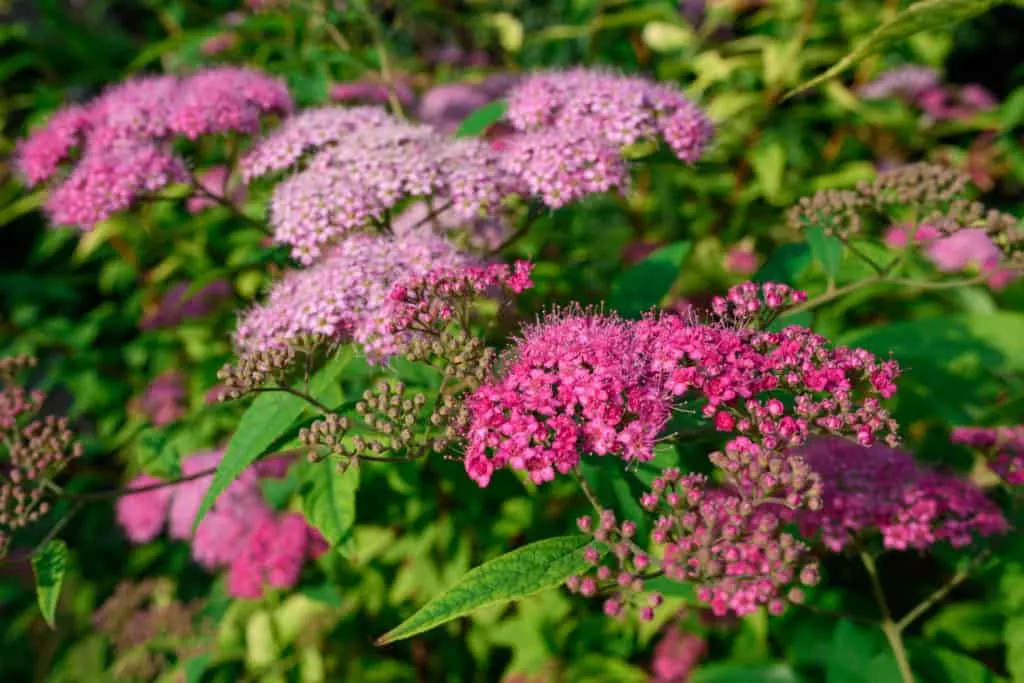
Size: 2 to 10 feet tall and wide.
Exposure: Full sun to part shade.
Hardiness: Zones 3 to 9.
Shape: Round.
9. Abelia (Abelia)
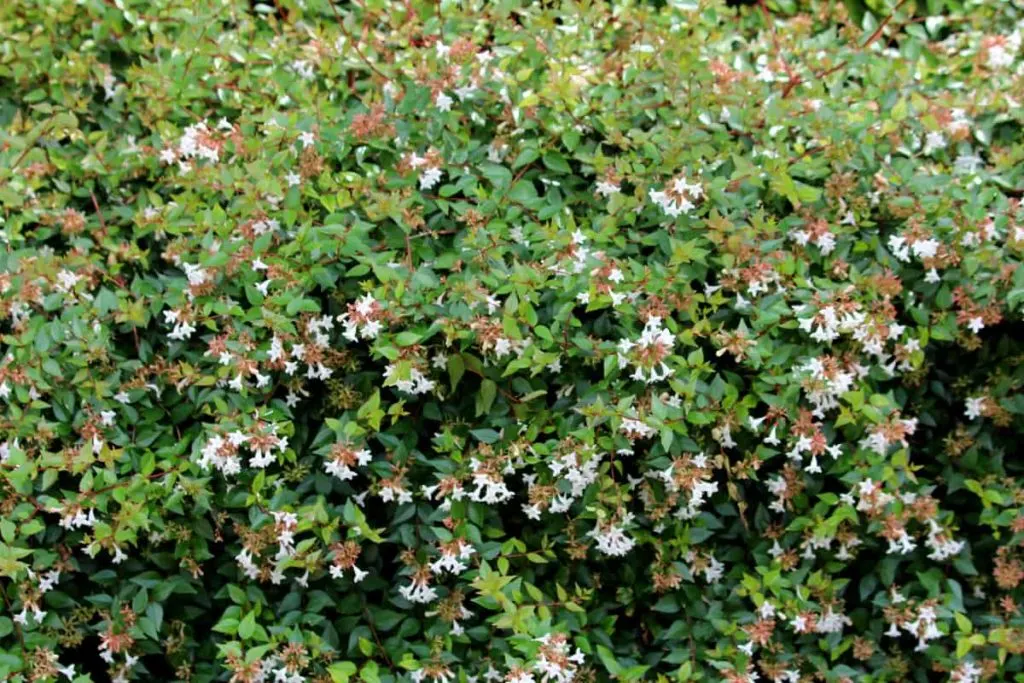
Size: 2 to 10 feet tall and 2 to 8 feet wide.
Exposure: Full sun to part shade.
Hardiness: Zones 4 to 11 depending on variety.
Shape: Round.
10. Rhododendron/Azalea (Rhododendron)
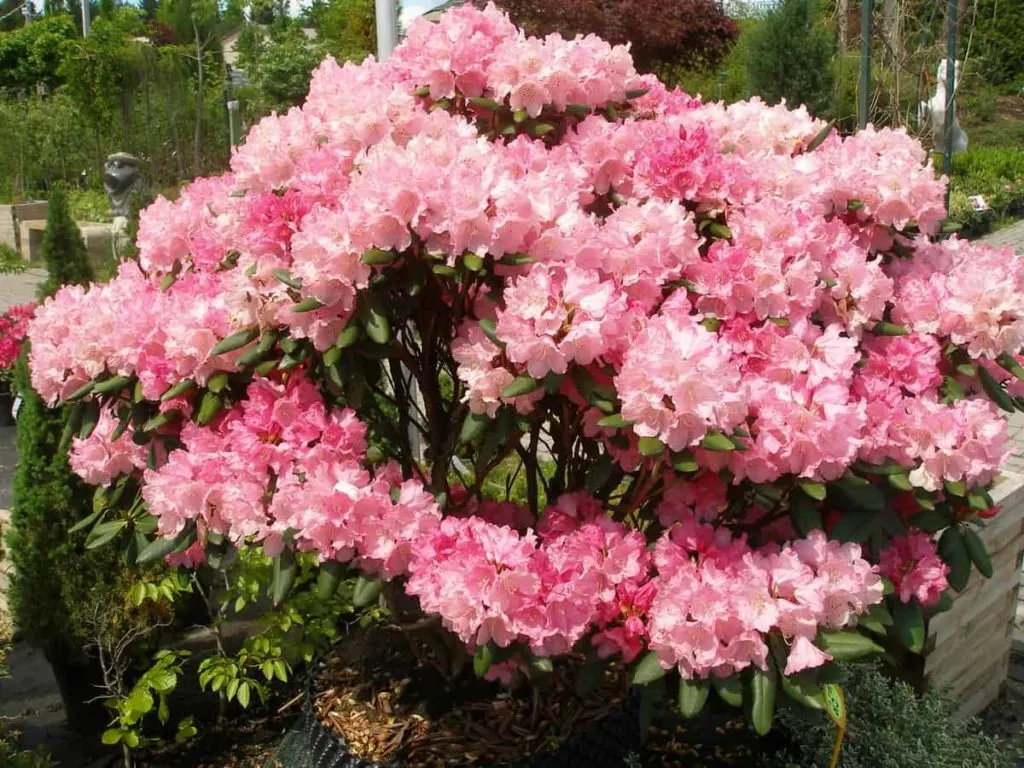
Size: 2 to 6 feet tall and wide. Look for small or dwarf varieties as some varieties may grow quite large.
Exposure: Part sun to part shade.
Hardiness: Zones 3 to 9. Requires acidic soil.
Shape: Round.
11. Beautyberry (Callicarpa)
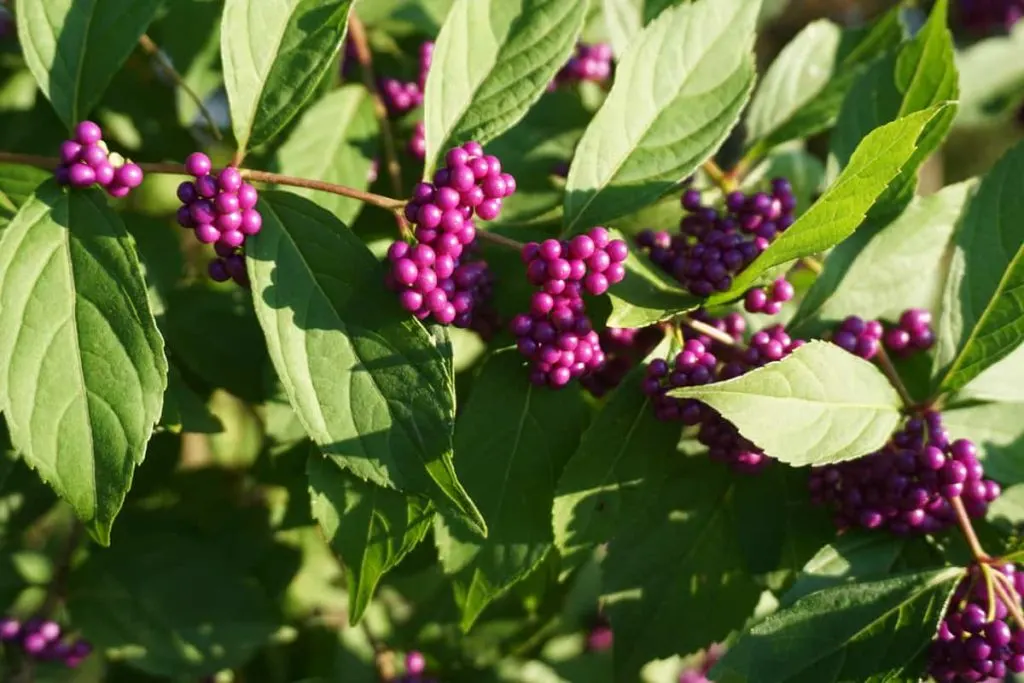
Size: 4 to 5 feet tall and 3 to 4 feet wide.
Exposure: Part sun to part shade.
Hardiness: Zones 5 to 8.
Shape: Upright.
Related Reading: How To Grow Beautyberry – The Edible Shrub That Also Repels Mosquitoes
Best Perennials and Ornamental Grasses
12. Stonecrop (Sedum)
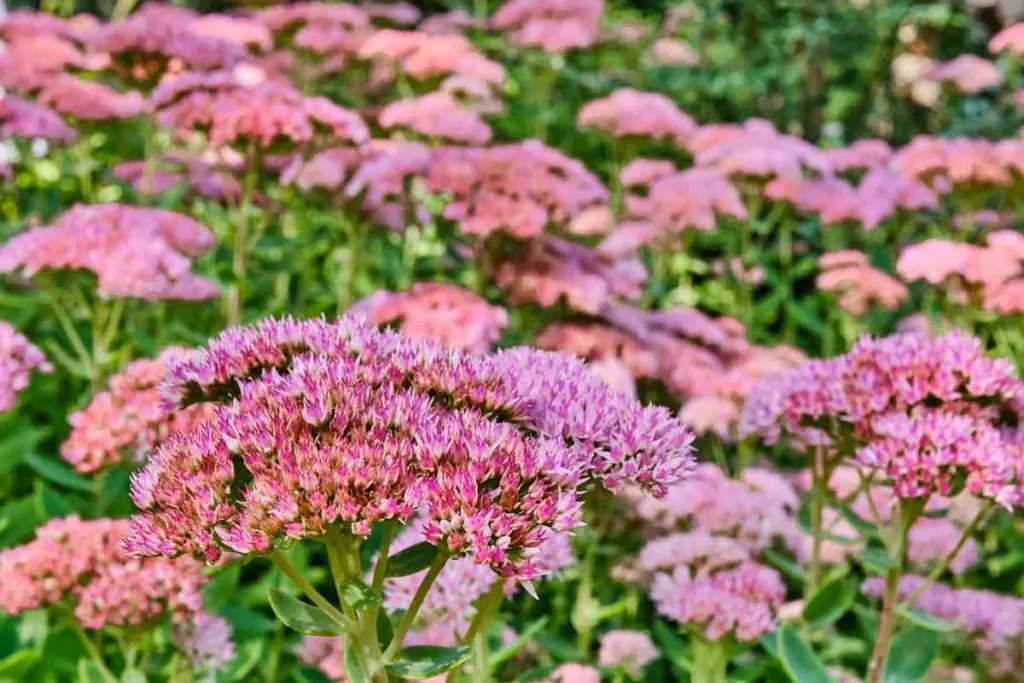
Size: 1 to 2 feet tall and wide.
Exposure: Part sun to sun.
Hardiness: Zones 4 to 9.
Shape: Groundcover.
13. Hosta (Hosta sp.)
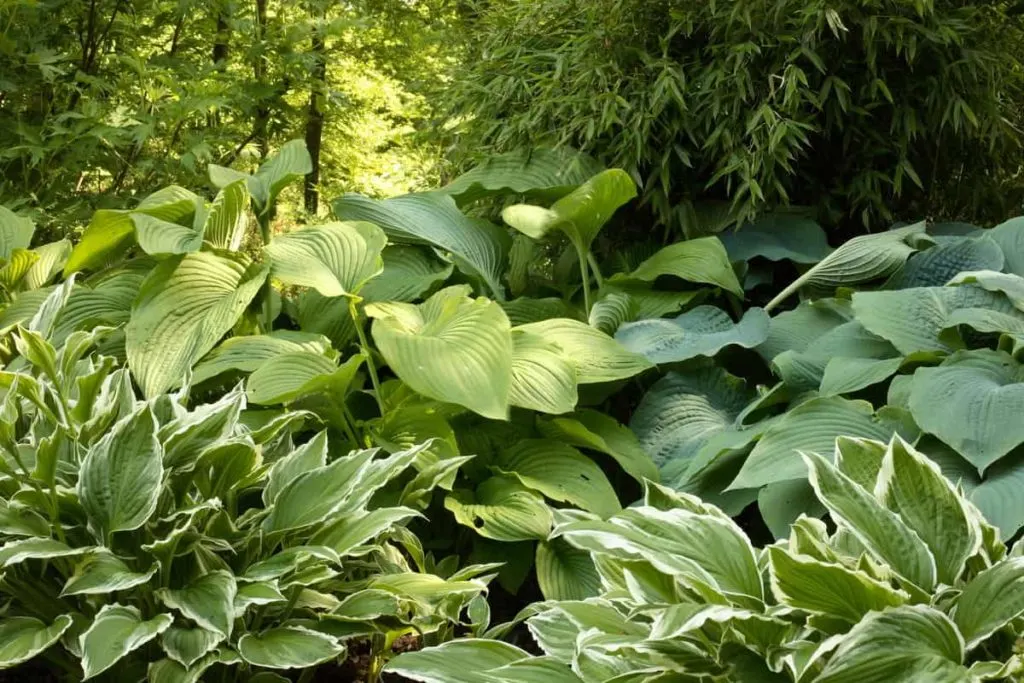
Size: 0.5 to 5 feet tall and wide.
Exposure: Part sun to shade.
Hardiness: Zones 3 to 9.
Shape: Groundcover or Mound.
14. Yucca (Yucca sp.)
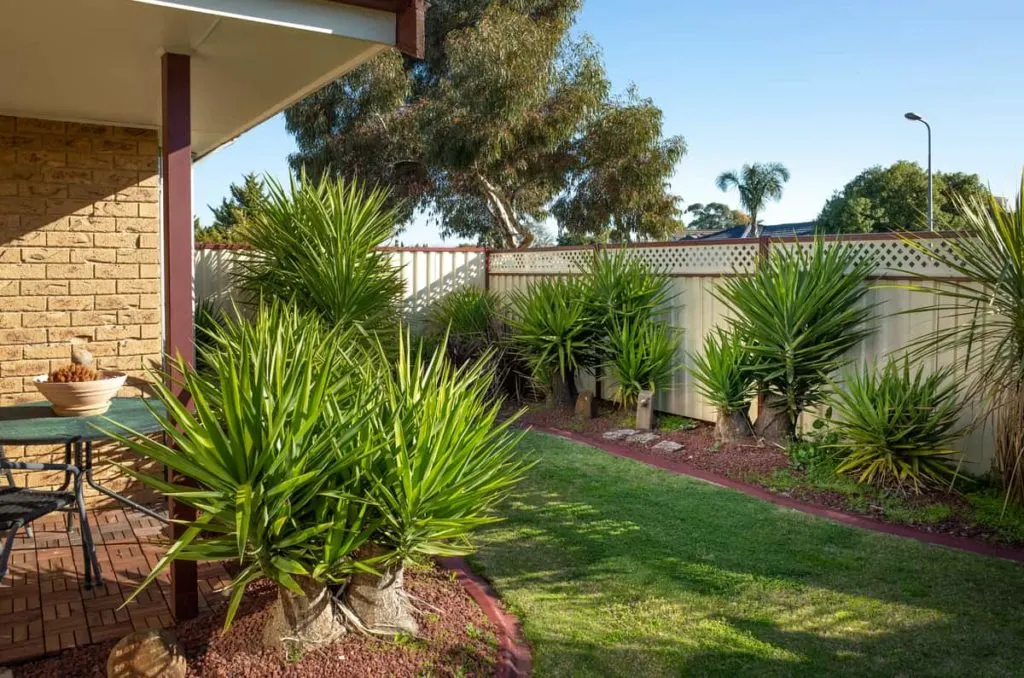
Size: 1 to 8 feet tall and wide. There are large varieties of over 20 feet tall.
Exposure: Full sun to sun.
Hardiness: Zones 4 to 11.
Shape: Spike.
15. Fountain Grass (Pennisetum)
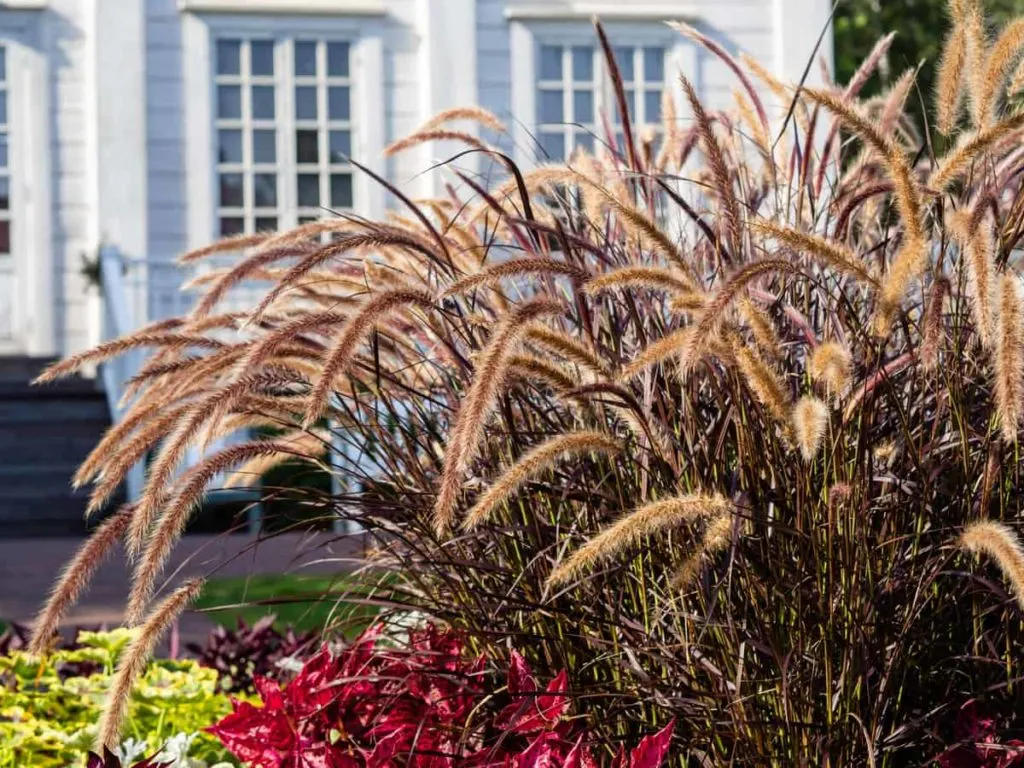
Size: 3 to 4 feet tall and 3 feet wide.
Exposure: Full sun.
Hardiness: Zones 4 to 10.
Shape: Arching spike.
16. Blue fescue grass (Festuca glauca)
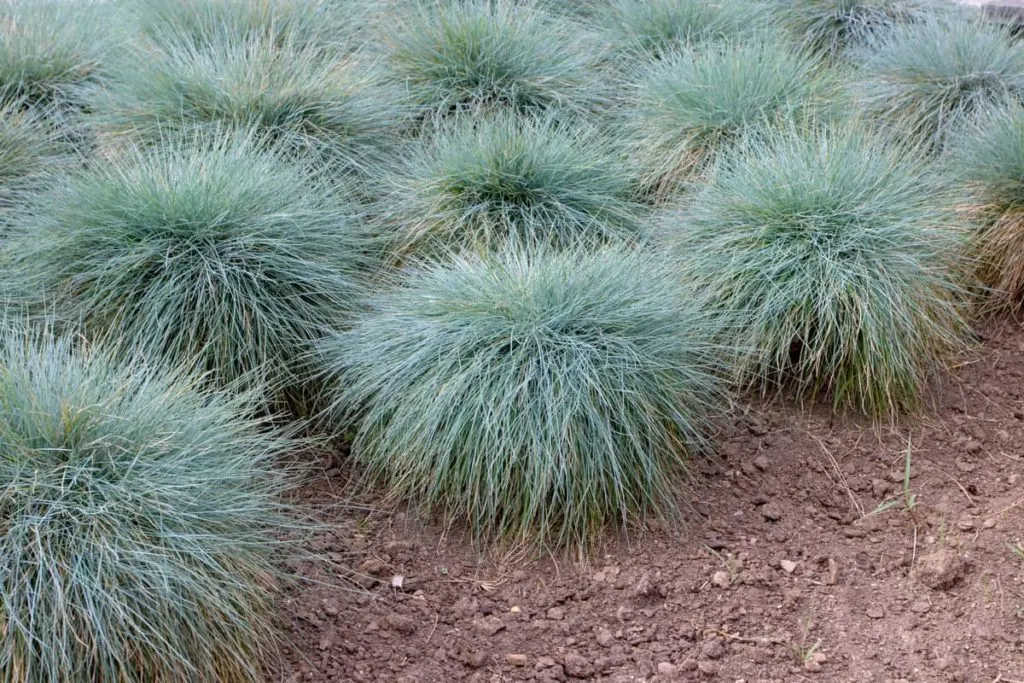
Size: 8 to 12 inches tall and wide.
Exposure: Full sun to sun.
Hardiness: Zones 4 to 8.
Shape: Grass mound.
Final Thoughts
Thoughtful use of foundation plants can be what makes a house, a home. By incorporating some of these tips and tricks, the home’s foundation planting can create a gorgeous cohesive landscape that is inviting, friendly, and hospitable.
